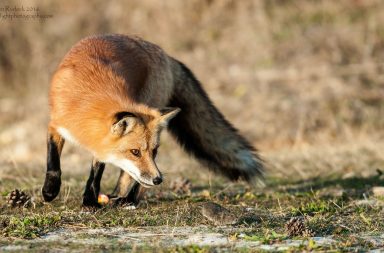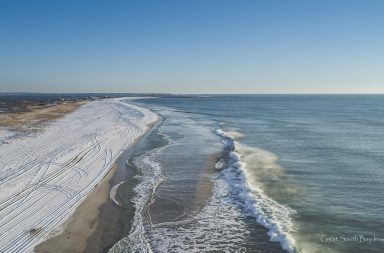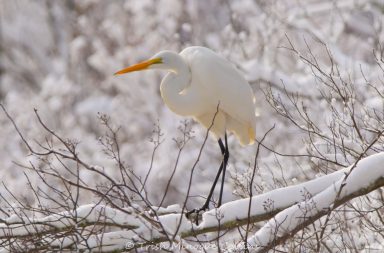NORTHERN “YELLOW-SHAFTED” FLICKER
Hear that “wicka, wicka, wicka” jungle-like sound? That’s one of the six woodpeckers that we get on Long Island, the Northern or Yellow-shafted Flicker. (The others are the Downy WP, Hairy WP, Red-bellied WP, Red-headed WP and the Yellow-bellied Sapsucker.) As a member of the woodpecker family you will find these wonderful birds drumming on trees all over LI in the springtime, as they are local nesters. They come readily to our bird baths, and sometimes to our suet feeders as well. This bird gets its name from the yellow found under the wings and tail, which you see when it flies. (There is also a Red-shafted Flicker which is found only in the western part of the US. There is some inter-breeding where the ranges overlap.) Flickers can be found in just about any habitat: from deep woods to city parks.
Flickers have brown backs and speckled breasts with a narrow black bib and a red patch on the nape of the neck. When flying, besides seeing the yellow in wings and tail, you will also see a distinctive white rump above the black edged tail. Males and females have the same markings except for a black “mustache” on the males, which the females do not have.
Male Flickers will return each year to the same nesting cavity; and if the female from last year also returns, they will mate again. Males establish territory by drumming, calling, head-bobbing and tail spreading showing yellow underneath. Nest building, or repairing, can take 1-2 weeks, can be from 2-60 feet off the ground and is done by both sexes. There is a great deal of competition for nesting cavities with other birds (Screech Owls, Kestrels, Great-crested Flycatchers and European Starlings) as well as squirrels. Raccoon predation of eggs is high.
Typically 6-8 eggs are laid. (Flickers are also known to lay eggs in nests of other birds: Red-headed WP, Tree Swallows, Bluebirds and House Sparrows.) Incubation is done by both parents (mostly male at night, shared during the day) and takes 11-12 days. Feeding is done by both sexes and fledging is in about 4 weeks. The family group stays together for several weeks.
When it comes to foraging for food Flickers are slightly different in their methods than the other woodpeckers. Flickers spend more time on the ground than any other woodpecker, searching for ants, which is their main diet. (Flickers eat more ants than any other North American bird. They will also eat other insects, as well as berries, nuts and grains.) They don’t walk well, so you will see them hopping in the grass and sticking their heads up to watch for danger. Often, all you will see is the head of the Flicker and then it will seem to disappear as it lowers its head again into the high grass. They have a sticky “fly-paper” tongue that allows them to search ant mounds for food.
“Anting” behavior is done by Flickers more than most other birds. This is when the bird will rub ants on their feathers releasing formic acid from the ants. Some researchers believe the formic acid acts as an insecticide against parasites, others believe it is done as a comfort activity during molt, and a third possibility is that they are getting the ant to expel the formic acid so they taste better.
Northern Yellow-shafted Flickers are migrants. Some birds will stay here on LI during the winter, but most migrate south. Most migrants settle in the Gulf States for the winter, but there are some that go as far south as Cuba.
The word “flicker” is an Old English term meaning “one who strikes”. Other names for the Flicker have been; Yellow Hammer, Goldenwing, Pigeon Woodpecker and Hairy Wicket. Although abundant, the Flicker numbers have been slightly declining, possibly due to nest competition with European Starlings which are much more aggressive birds.
So, listen for that jungle-like sound and look for the Northern Yellow-shafted Flicker. A fun bird!
Photos below contributed by members of the Long Island Wildlife Photography Group on Facebook

Thomas Hakiel

Thomas Hakiel

Steven Williams

William Walsh

William Walsh

Tony Fanni

Patricia Dawn McFadden-Leccese
More images on pages 2,3,4, and 5



